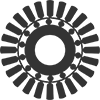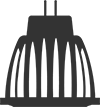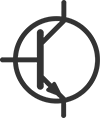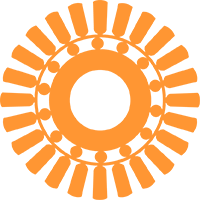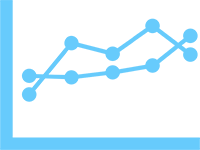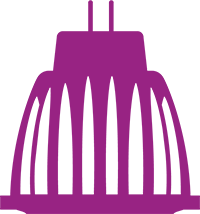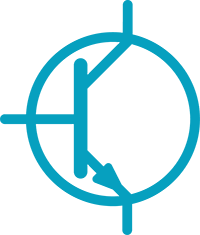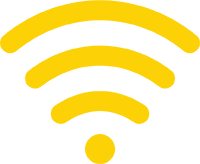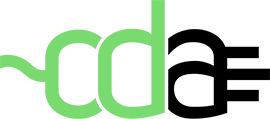Today, the IEA 4E SSL Annex published its new and updated “quality and performance requirements” for the most popular LED lamps and luminaires. These specifications, elaborated by experts in the Annex’s six member governments, are not tied to a certain region in the world, and they offer policy makers and programme managers guidance on the most important parameters to consider when specifying or regulating LED lamps and luminaires. Parameters include efficacy, lifetime, light colour, durability, and many other metrics.

Click here to view the updated Quality and Performance Requirements
The six governments of the IEA 4E SSL Annex member countries have today published new quality and performance requirements for the most common LED lamps and luminaires: (1) Non-directional Lamps; (2) Directional Lamps; (3) Strip Lights; (4) Integrated LED Luminaires; (5) Integrated Downlights; (6) Planar (or Panel) LED Luminaires, (7) Linear Batten LED Luminaires; (8) Linear Troffer LED Luminaires; (9) High-Bay / Low-Bay LED Luminaires; (10) Area (Floodlight) Integrated Luminaires and (11) Roadway Integrated Luminaires.
These requirements were developed by the SSL Annex member governments’ experts and underwent public review and comment. They partly represent a new approach since they are more forward looking than previous versions of the performance tiers. They are based on extensive market research as well as on hard laboratory test data from participating governments to reflect actual product performance.
By providing these quality and performance tiers, governments and programme managers can also develop programme specifications more quickly and at lower costs. The IEA 4E also hopes to bring some harmonisation to the market to avoid the situation where governments and programme managers act independently and “re-invent the wheel”. That approach can result in a patchwork of regulations or specifications around the world that is both expensive and burdensome for suppliers.
“The performance tiers are one of our most important activities that we carry out in the IEA 4E SSL Annex” said Professor Georges Zissis, France, chair of the SSL Annex Management Committee. “In the Annex, we focus on issues and topics that regularly are of concern for governments, and provide data and guidance to help policy makers make informed choices”.
Lighting accounts for approximately 15% of global electricity consumption. The International Energy Agency’s Energy Efficient End-use Equipment (IEA 4E) implementing agreement have identified solid state lighting (SSL) technologies as having the potential to cut global lighting electricity consumption by 30%. In a recent IEA publication, Technology and innovation pathways for zero-carbon-ready buildings by 2030, the Agency called on governments around the world to ensure 100% of lighting sales are LED by 2025: “…policy makers must keep pace by implementing and enforcing regulations in the buildings sector to ensure the switch in the global lighting market to 100% LED by 2025 is reached — a key milestone in transforming the global buildings sector under the Net Zero Emissions by 2050….“ The SSL Annex’s quality and performance tiers will help achieve that objective, giving guidance on requirements for mandatory regulations and market pull initiatives promoting the switch to LED lighting.
More than twenty technical experts from the SSL Annex’s six member countries contributed to the report released today. To view these performance tiers, visit our website: http://ssl.iea-4e.org/product-performance. The SSL Annex is continuing to monitor the market and the appropriateness of these published tier levels, and fully expects that further revisions will be made in the future as SSL technology advances.
[ENDS]
About the IEA 4E Solid State Lighting Annex
The SSL Annex was established in 2010 under the framework of the International Energy Agency’s Energy Efficient End-use Equipment (4E) Technology Collaboration Programme (TCP) to provide advice to its member countries seeking to promote energy efficient lighting and to implement quality assurance programmes for SSL lighting. This international collaboration currently consists of the governments of Australia, Denmark, France, the Republic of Korea, Sweden and the United Kingdom. Information on the 4E SSL Annex is available from: https://www.iea-4e.org/ssl/
About the IEA Technology Collaboration Programme on Energy Efficient End-Use Equipment (4E)
Fifteen countries from the Asia-Pacific, Europe and North America have joined together under the forum of 4E to share information and transfer experience in order to support good policy development in the field of energy efficient appliances and equipment. 4E focuses on appliances and equipment since this is one of the largest and most rapidly expanding areas of energy consumption. With the growth in global trade in these products, 4E members find that pooling expertise is not only an efficient use of available funds, but results in outcomes that are far more comprehensive and authoritative. Launched in 2008, in view of its achievements during the first and second five-year terms, the IEA endorsed 4E’s application for a third term that will run to 2024. https://www.iea-4e.org/
Press Contact:
Nils Borg
Operating Agent
Borg & Co.
Stockholm, Sweden
T: +46 70 585 31 74
E: nils@borgco.se























